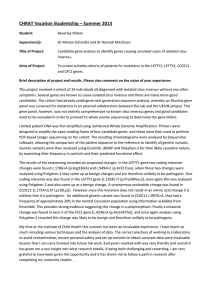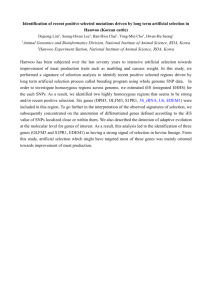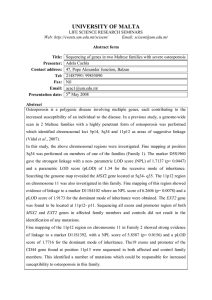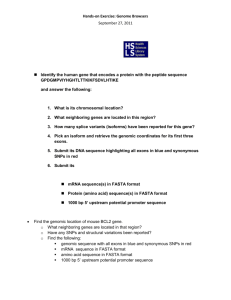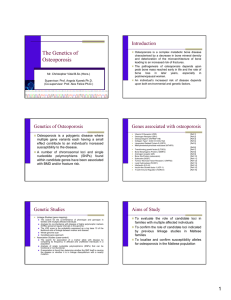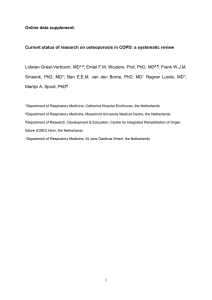UNIVERSITY OF MALTA
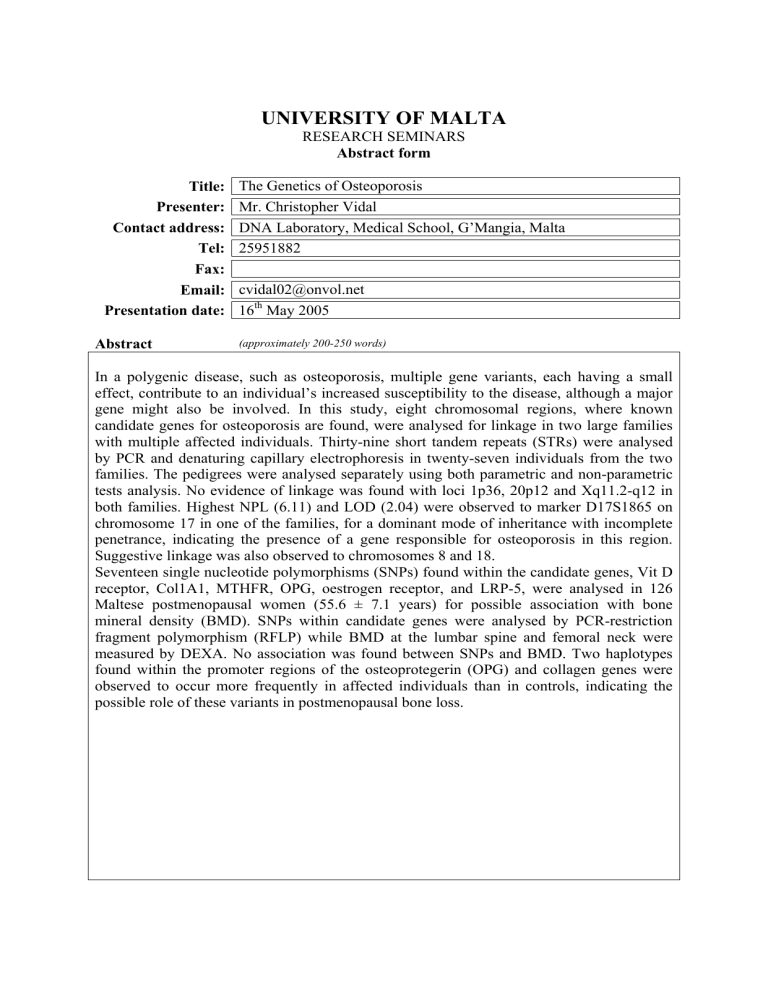
UNIVERSITY OF MALTA
RESEARCH SEMINARS
Abstract form
Title: The Genetics of Osteoporosis
Presenter: Mr. Christopher Vidal
Contact address: DNA Laboratory, Medical School, G’Mangia, Malta
Tel: 25951882
Fax:
Email: cvidal02@onvol.net
Presentation date: 16 th
May 2005
Abstract (approximately 200-250 words)
In a polygenic disease, such as osteoporosis, multiple gene variants, each having a small effect, contribute to an individual’s increased susceptibility to the disease, although a major gene might also be involved. In this study, eight chromosomal regions, where known candidate genes for osteoporosis are found, were analysed for linkage in two large families with multiple affected individuals. Thirty-nine short tandem repeats (STRs) were analysed by PCR and denaturing capillary electrophoresis in twenty-seven individuals from the two families. The pedigrees were analysed separately using both parametric and non-parametric tests analysis. No evidence of linkage was found with loci 1p36, 20p12 and Xq11.2-q12 in both families. Highest NPL (6.11) and LOD (2.04) were observed to marker D17S1865 on chromosome 17 in one of the families, for a dominant mode of inheritance with incomplete penetrance, indicating the presence of a gene responsible for osteoporosis in this region.
Suggestive linkage was also observed to chromosomes 8 and 18.
Seventeen single nucleotide polymorphisms (SNPs) found within the candidate genes, Vit D receptor, Col1A1, MTHFR, OPG, oestrogen receptor, and LRP-5, were analysed in 126
Maltese postmenopausal women (55.6 ± 7.1 years) for possible association with bone mineral density (BMD). SNPs within candidate genes were analysed by PCR-restriction fragment polymorphism (RFLP) while BMD at the lumbar spine and femoral neck were measured by DEXA. No association was found between SNPs and BMD. Two haplotypes found within the promoter regions of the osteoprotegerin (OPG) and collagen genes were observed to occur more frequently in affected individuals than in controls, indicating the possible role of these variants in postmenopausal bone loss.


